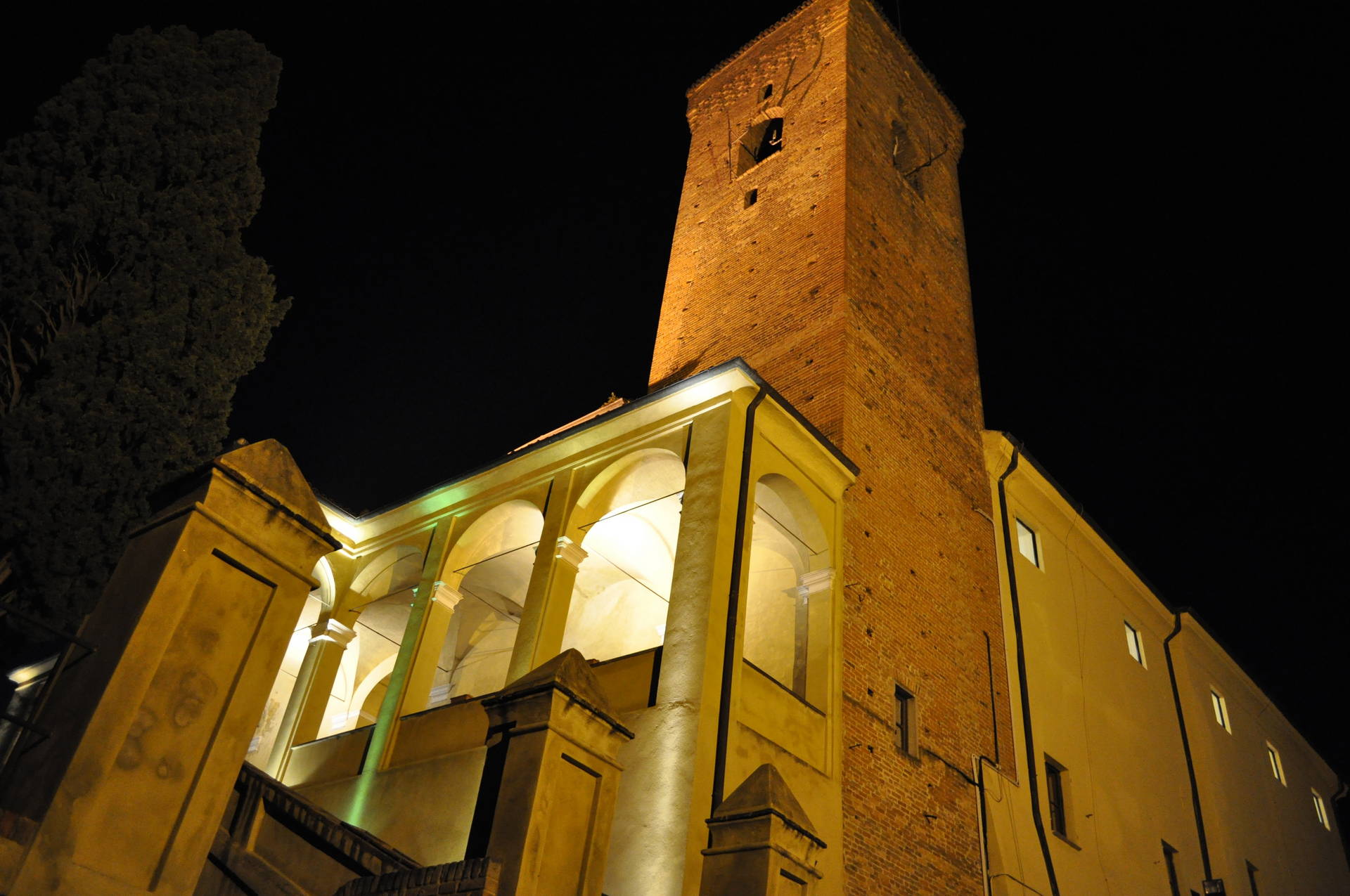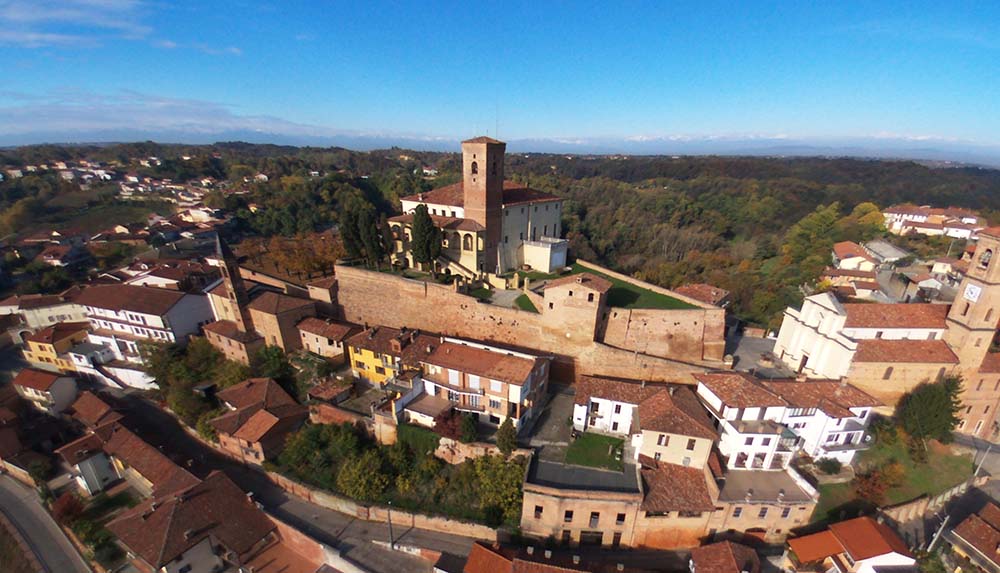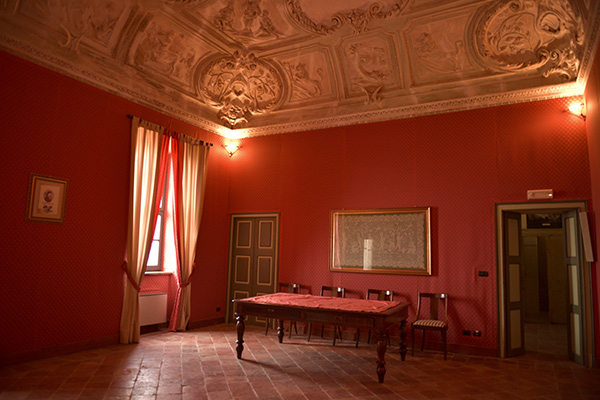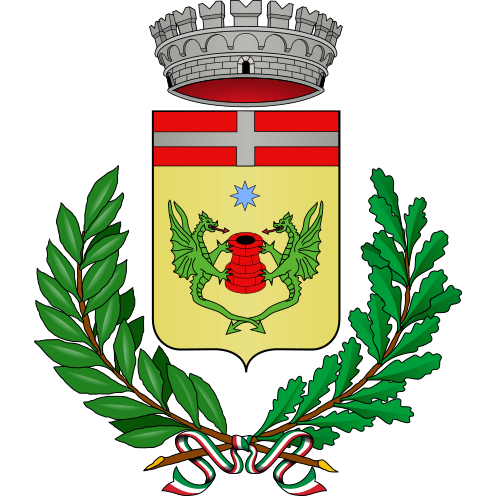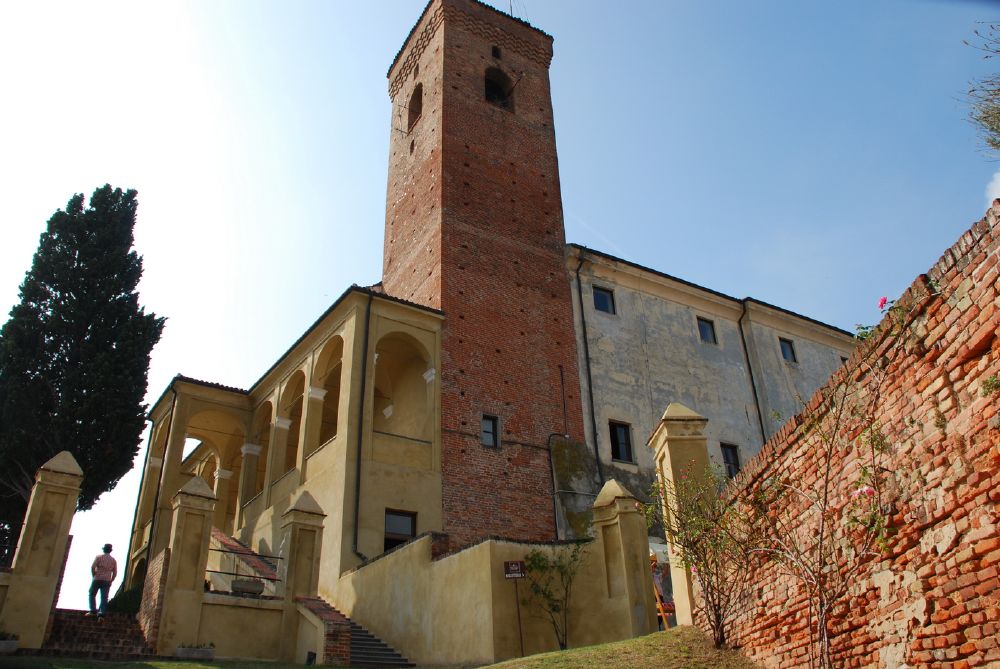
Business Hours
15:00 → 19:00
(last admission 6:00 p.m.)
Contacts
Closing Day
Holidays
Of considerable interest as an example of a castle complex, renovated and augmented over time, the castle of Cisterna d’Asti shows obvious constructions from different eras.
Various scholars have written about this testimony of composite historical architecture: Ludovico Vergano, Renato Bordone, Baldassarre Molino and others.
The first documentary mention of the place is in a deed from 980.
Acquired by Savoy donation, by the City of Cisterna in 1912, since 1980 the castle has housed the “Arts and Crafts Museum of the past,” which collects about 4,000 objects from the period between the seventeenth and twentieth centuries, evidence of Piedmont’s artisan and peasant culture.
The Exterior
Two tall, mighty masonry ramparts are still clearly observable today: the one to the northeast is from the 16th century, the one to the southwest dates from 1690-1694.
The quadrangular tower
Looking externally, on the eastern edge of the castle embankment rises the quadrangular tower, made of exposed brick.
It was probably built, replacing a pre-existing one, by the lords de Gorzano after 1242, when Giacomo and Manfredo di Loreto sold their Cistern lands to the Municipality of Asti.
According to what Inzerra Bracco and Nanà Villata note in a 1989 book:
It has a square floor plan of about 5.80 meters on the side; the walls are about 1.10 meters thick at the base and the height is about 30 meters; the masonry apparatus is perfect and the average thickness of lime between the bricks is one centimeter.
Four large openings with round arches are visible on each side; above these, four small single-lancet windows can be seen, which seem to belong to the early design of the tower.
The tower-gate
Almost coeval with the keep is the tower doorway to the upper fortified enclosure of the Cisternese castle.
This sector includes a large enclosed, inaccessible area with overhanging walls, as well as the almost square-shaped summit core.
A number of distinctive elements characterize the tower gate: the round-arched portal, the stringcourse, and the now plugged-in battlements.
Still second Inzerra Bracco and Nanà Villata:
Of particular interest is its decorative frame; it consists of several bands of bricks interposed with lozenge frames. This cornice is surmounted by dovetailed battlements, now plugged and covered by the roof.
This gateway to the ramparts floor may have been opened by replastering an older building, perhaps already intended for the guardhouse, but until the 1800s it was in a building next to the tower gate.
The defensive system
Among the Piedmontese centers validly fortified between 1536 and 1559, only two appear in the Roero: Cisterna d’Asti and Sommariva del Bosco.
Cisterna’s fortifications, represented by military architect Francesco Orologi in his codex Breve ragioni del fortificare of 1536-1559, stand out in this regard.
Cisterna’s 16th-century fortifications are built in a very troubled situation: first damaged during the French occupation, the locality is disputed between the Holy See and the Milanese Acerbo family.
Two tall, mighty masonry ramparts are still clearly observable today: the one to the northeast is from the 16th century, the one to the southwest dates from 1690-1694.
N° of rooms
N° of floors
Park
Visit Duration
Ticket Price
Audioguides
Guided Visit
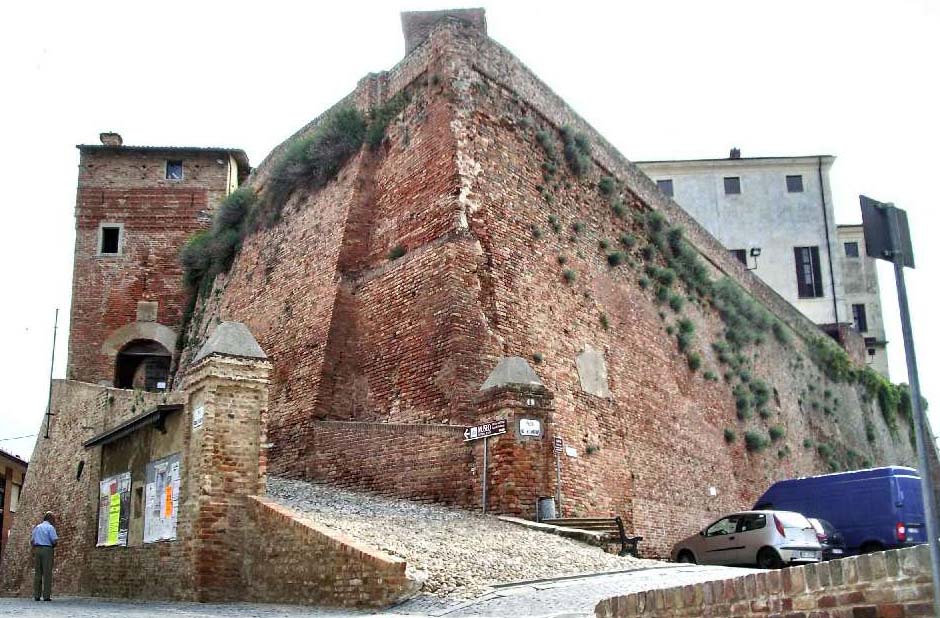
The rampart walls were used to oppose firearms.
The Interior
Between the second half of the 16th century and the following century, the residential sector of the castle was considerably renovated.
Further improvements are also made to the 16th-century body, with the double staircase and its loggia.
Mint
In particular, in 1670 and 1673 Marquis Giacomo Del Pozzo obtained from the pope, to whom the place was subject, the elevation of Cisterna to a principality and the right to mint coinage.
Therefore, action is taken both to fix the mint on the ground floor and to expand the castle complex toward the northwest.
In 1694 the rampart surrounding the lower garden was built.
During the 18th and 19th centuries, mostly maintenance works are carried out.
Dungeons
The interior of the castle tower gate provides access to the tunnels, already indicated in a 1581 map, mostly articulated under the courtyard at a depth of five meters.
On either side of the main one are six large niches, some with bas-relief carvings on the back walls in marl.
Two of which show symbolic representations that are not easy to interpret: in one, a pummeled Greek cross can be observed above a radiant sun or disk; in another, a kind of rudimentary fish hanging from a visor can be discerned.
Other interiors of the castle
The large central hall corresponds to what used to be the castle court.
Under the floor there is still the cistern that probably gave the site and thus the village its name.
N° of floors
Park
Visit Duration
Ticket Price
Audioguides
Guided Visit
Prices and information
The castle houses the Arts and Crafts Museum of the past, but it has its own ticket and specific hours.
Admission and guided tour
- 5,00 € full
- 3,50 € reduced: children and youth 4-14 years old, groups (min. 15 people) and over 65 years old
- free for holders of Tessera Musei Torino Città Capitale, Torino+Piemonte Card
Extraordinary closures

The territory of Cisterna is on the border between Roero and Langa Astigiana.

The castle of Cisterna d'Asti
Piazza Maggiore Hope, 1, 14010 Cisterna D'asti, AT, Italia
Directions ↝

The tower of Castellino Tanaro
Torre di Castellino Tanaro, SP115, Castellino Tanaro, CN, Italia
Discover ↝

The parish church of San Giorgio Scarampi
Via Brofferio, 18, 14059 San Giorgio Scarampi AT, Italia
Discover ↝
Are you planning a trip in the Langhe region?
Let us help you design the perfect vacation, and live your stay like a true insider
Free
Service
Ask us
For advice
Free Service
Ask us
For advice
Free Service

Fill in the form
reporting your interests and preferences
Receive our suggestions
directly into your inbox
And if it's not enough
we'll design a personalized trip!
